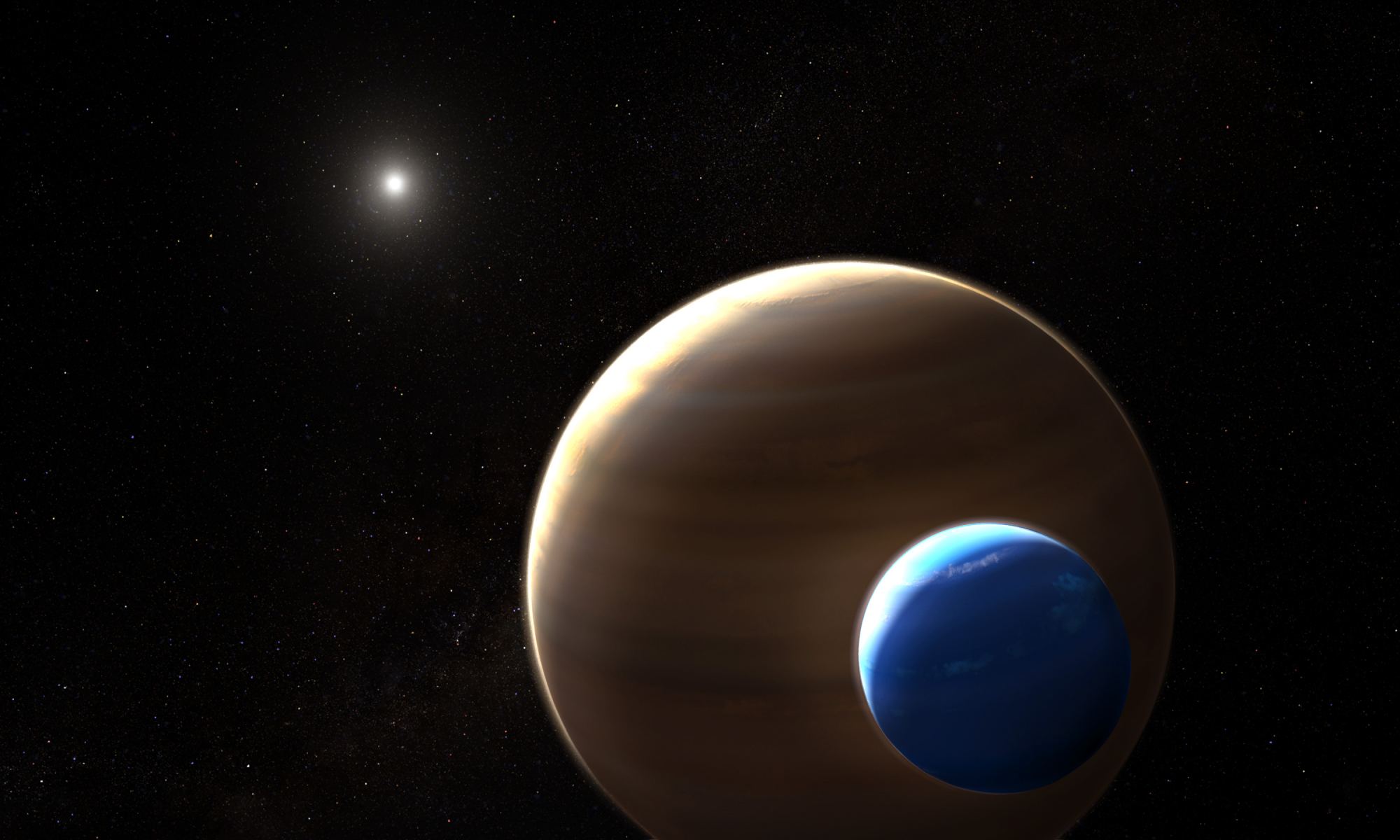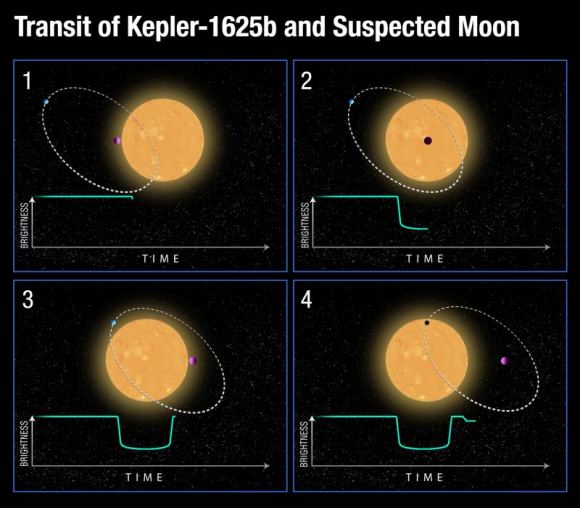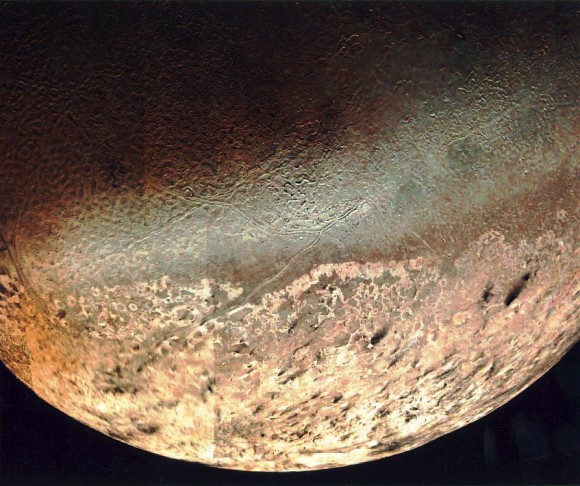

Johns Hopkins University (JHU) continues to pad its space community résumé with their interactive map, “The map of the observable Universe”, that takes viewers on a 13.7-billion-year-old tour of the cosmos from the present to the moments after the Big Bang. While JHU is responsible for creating the site, additional contributions were made by NASA, the European Space Agency, the National Science Foundation, and the Sloan Foundation.

A pair of astronomers combing through data from the Kepler spacecraft have discovered the first exomoon. The moon is in the Kepler 1625 system about 8,000 light years away, in the constellation Cygnus. It orbits the gas giant Kepler 1625b, and, unlike all the moons in our Solar System, this one is a “gas moon.”

This diagram shows the sequence of photometric observations taken by Hubble. The purple object represents the planet Kepler 1625b, and the smaller green object is that planet’s exomoon. The exomoon travels in front of the star about 3.5 hours after the planet. Image: NASA, ESA, D. Kipping (Columbia University), and A. Feild (STScI)

Neptune’s largest Moon, Triton. Astronomers think that Triton is a captured Kuiper Belt Object. Credit: NASA/JPL
Hubble site article on exomoons
CAN MOONS HAVE MOONS?
Juna A. Kollmeier1 & Sean N. Raymond2
Draft version October 9, 2018 (PDF)
For the perfect gift for your significant other, head to for 21% off The Hunt for Exomoon Worlds continues as David Kipping joins John Michael Godier to discuss how two candidates have been found but frustratingly he has been denied time to confirm the candidates using hubble or the JWST. David Kipping links: / @coolworldslab / @ucjanyx_ylbqabij... / @coolworldspodcast Supermind by JMG Patreon: Want to support the channel? Follow us at other places! Website: Twitter: Instagram: Youtube Membership Podcast: Apple: Music featured on Event Horizon Stellardrone Bandcamp Miguel Johnson Leerosevere bandcamp Aeriumambient Bandcamp FOOTAGE: NASA ESA/Hubble ESO - M.Kornmesser ESO - L.Calcada ESO - Jose Francisco Salgado (josefrancisco.org) NAOJ University of Warwick Goddard Visualization Studio Langley Research Center Pixabay